Disadvantages Of Ceramic Heaters & Common Problems – Are They Worth Buying?
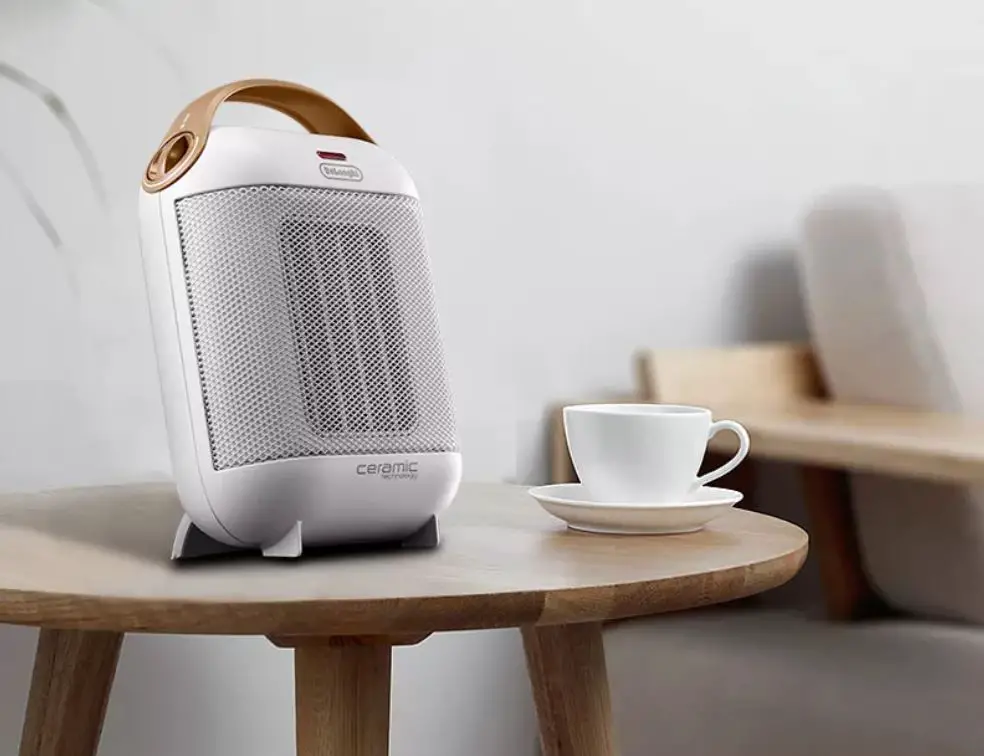
With natural gas prices expected to surge very soon, it seems that everyone is looking for alternative methods of keeping warm this winter.
This is a pressing issue for many Americans as it is estimated that 62 million US homes rely on natural gas for warmth.
The good news is that there are viable heating alternatives. You may have heard of one of them: ceramic heaters. But is it really the answer to your natural gas blues? Ceramic heaters are popular for many different reasons.
In fact, ceramic heaters are among the most popular types of portable space heaters. But there are things you have to know about these kinds of devices before you invest in one.
To help you decide if a ceramic heater is a good choice for your home, we have put together the following article that details the disadvantages and benefits of ceramic heaters.
We will also be answering some of the most commonly asked questions about them. Let’s get started…
Overview of Ceramic Heaters
Ceramic heaters usually come in the form of portable space heaters. They are electric heaters that use ceramic panels to radiate heat in a room. However, they are often limited in heating range and may actually dehumidify the air in a room.
What Are Ceramic Heaters?

You will often see ceramic heaters referred to as space heaters. That’s because these devices are not designed to heat your whole home.
They use radiant heat so they are only suitable to warm up a small area as in a small to medium-sized room.
Ceramic heaters are electrical devices that need to be plugged in. They cannot be used for central heating.
However, they are compact and usually portable. So while you cannot use one to heat multiple rooms (or an entire home) at once, you can typically very easily move one from room to room as needed. Of course, ceramic heaters use electricity as opposed to natural gas to produce heat.
How Do Ceramic Heaters Work?
We’ve already established that these are electric devices. Ceramic heaters depend on electricity and ceramic panels to generate and distribute heat. Once the device is turned on, metal coils heat up with the electrical current.
Ceramic panels surround the metal coils and absorb the heat they produce. The Ceramic panels then give off the heat via radiation. Ceramic is a very thermo conductive material so it can take a lot of heat and release a lot of it too.
This is what makes ceramic heaters effective for warming small areas. Ceramic heaters can work with or without a fan. Without a fan, the heaters rely solely on the radiant heat given off by the ceramic panels.
Ceramic heaters with a fan are able to blow warm air throughout the room. The fan blows air over the heated ceramic panels, thus distributing warmed air quicker and further than radiation alone.
Disadvantages of Ceramic Heaters
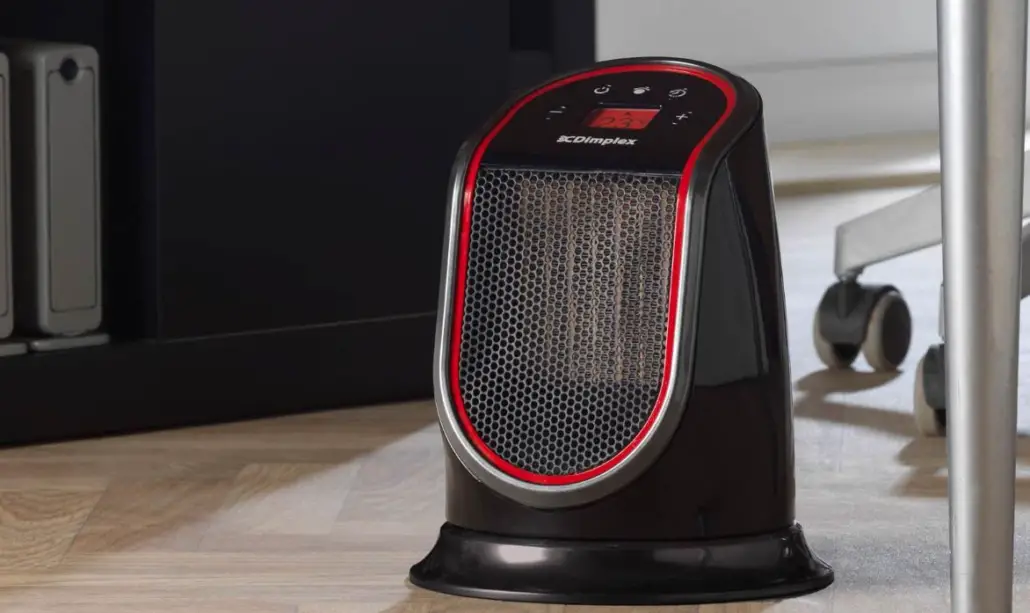
Only for Small Spaces
Even ceramic heaters equipped with a fan aren’t suitable for very large rooms. In general, you will find that ceramic heaters are suitable only for small to medium rooms – or even just the area right next to where you are.
They Can Take A While
While ceramic has good thermal properties, the panels in ceramic heaters can take a long time to heat up. While most quality models will heat up in 5 minutes or less, there have been reports of some devices taking up to 15 minutes to heat up. They can be especially slow at heating up a room if they don’t have a fan.
Heat Blockage
Since these types of heaters rely on radiant heat, objects can block the warmth. For example, if you place a ceramic heater behind a piece of furniture, you will likely not feel the warmth.
No Residual Heat
Unlike a centralized, forced-air heater, a ceramic heater will not provide any lingering warmth once it’s turned off. Essentially, as soon as you turn one of these heaters off, the warmth disappears. So it needs to be continually run to provide warmth.
Not the Most Energy-Efficient Type of Space Heater
A ceramic heater needs a lot of electricity to provide warmth. They also increase the load on your circuit breaker which could result in shorts and trips.
Noise
Some ceramic heaters simply produce a lot of noise. While this can be negated by buying a higher-end heater, it should still be noted.
Dry Air
Some types of radiant heaters, including ceramic heaters, have been known to sap the moisture from the air. If you have sensitive skin or sinuses, this can be an issue for you.
Ceramic heaters, in some cases, can dry out the air leading to skin, nose and even eye irritation.
Teflon Coated Panels
Some models of ceramic heaters feature teflon-coated panels. On its own, teflon is pretty much harmless. But when it is heated up (as in cookware or portable heaters) it may release contaminants into the air.
Common Problems Associated With Ceramic Heaters
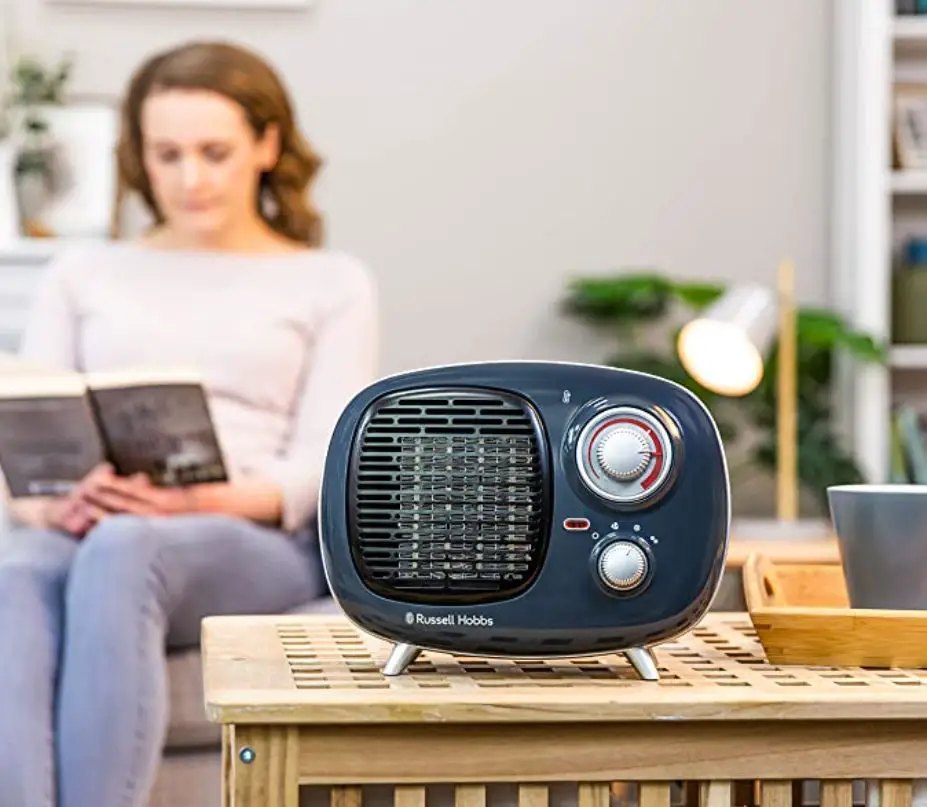
Burning Hazard
While this is true of almost any kind of portable space heater, you should still be aware that it is possible to burn your hands on a ceramic heater.
This is an even more concerning possibility if you have children or pets in the house. Many models have protective grates that jut out from the heating element to prevent burns, however.
Fire Hazard
Again, this is an issue with almost any kind of electrical heater. Still, it is possible that ceramic heaters can come into contact with flammable materials and start a fire.
The increased electrical load can also spark an electrical fire in some cases.
Irritation Caused by Dry Air
As we discussed, radiant heaters like ceramic heaters may dehumidify a room. For people with sensitive sinuses, this can lead to irritation and inflammation.
Benefits of Ceramic Heaters
Comparative Efficiency
Compared to other types of electrical space heaters, ceramic heaters are actually more efficient with electricity.
Compact Design
Even the larger ceramic heaters are still portable. These types of devices tend to be lightweight, small and easily moveable from room to room.
This also makes them a good option in tight spaces like dorms and RVs.
Emission Free
With the exception of teflon-coated panels, ceramic heaters do not emit any dangerous fumes or contaminants into the air.
In terms of emissions, ceramic heaters are much safer than gas heaters, wood-burning stoves and coal-burning furnaces.
Temperature Control
Many modern ceramic heaters include digital thermostats which makes it very easy to control the temperature. Even the ones that don’t will typically have a temperature dial that allows you to fine-tune the amount of heat they give off.
Affordability
Last but certainly not least, ceramic heaters are generally affordable – especially when you compare them to installing central heating or a furnace in your home.
Comparisons
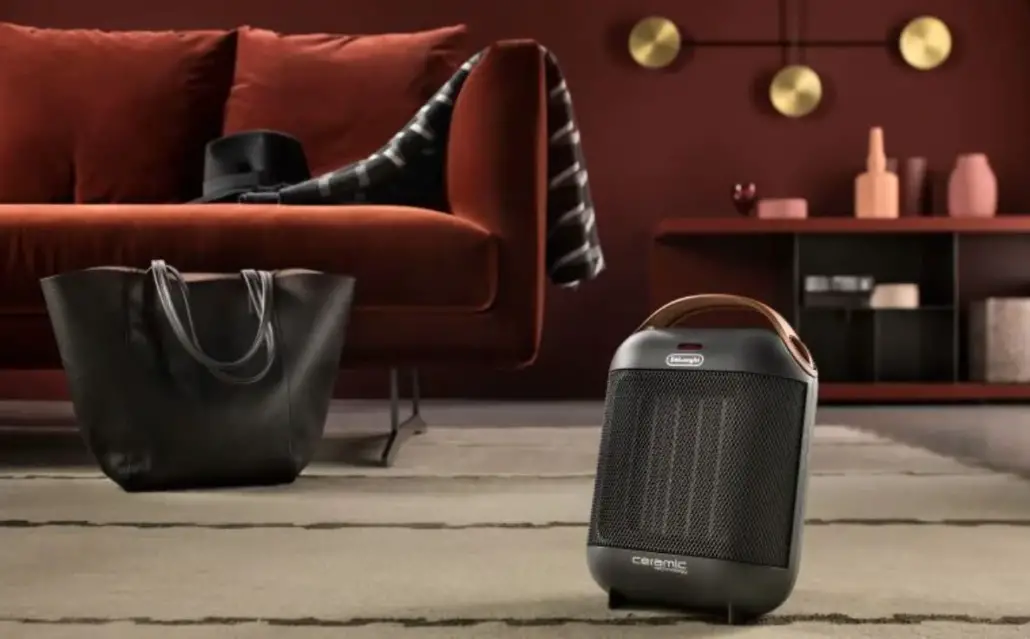
Ceramic Heaters Vs Infrared Heaters
Infrared heaters will warm the person or object directly in front of them while ceramic heaters will heat up an entire small space. Infrared heaters tend to be more efficient; but ceramic heaters are suitable for larger areas.
Ceramic Heaters Vs Fan Heaters
Fan heaters also rely on electrified metal coils to produce heat. However, they also incorporate a fan to distribute the heat evenly. Ceramic heaters can also come with a fan and are better at producing residual heat.
Ceramic Heaters Vs Oil Heaters
While ceramic and oil heaters are similar in terms of efficiency, ceramic heaters tend to be more compact and easier to move around since they don’t have an oil reservoir.
Who Should Buy Ceramic Heaters?
Ceramic heaters are a good option for anyone who needs a bit of supplemental heat in a small to medium-sized room.
They work well in RV’s, dorms, studio apartments and in rooms of the house that may have clogged heating ducts or are far away from the central heater.
Our 3 Best Ceramic Heaters
Amazon Basics 1500W Oscillating Ceramic Heater
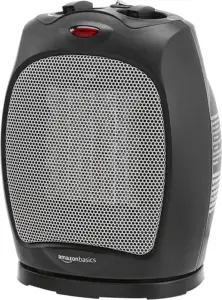
This heater has an adjustable thermostat and can be set to 3 different heat outputs. It also oscillates so it distributes heat evenly.
Pros:
- 1500-watt max setting
- 1-year warranty
Cons:
- Odd smell
Overall Score: 96/100
Check Out More Reviews Here:
GiveBest Portable Electric Space Heater

The GiveBest Space Heater can heat a space up to 200 square feet. It has a fan and 2 heat settings. It will also turn itself off if it is tipped over.
Pros:
- Weighs only 3.2lbs
- Affordable
Cons:
- Faulty fan
Overall Score: 93/100
Check Out More Reviews Here:
Lasko Oscillating Ceramic Designer Series Space Heater
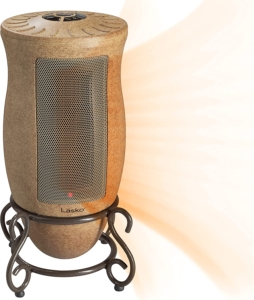
If you’re looking for a beautiful ceramic heater, this is the one. It has an elegant and attractive design and is suitable to heat areas up to 300 square feet.
Pros:
- Looks beautiful
- Oscillates
Cons:
- A bit pricey
Overall Score: 94/100
Check Out More Reviews Here:
Ceramic Heater FAQs
Q: Are ceramic heaters safe overnight?
In general, you should never leave any space heater on overnight.
Q: Are ceramic heaters safe to use?
Yes. Ceramic space heaters don’t emit toxins into the air and most of them have safety features like tip-over shutoff and cool to the touch exteriors.
Q: How long can you run a ceramic heater for?
Most space heaters, including ceramic heaters, can be run 24 hours a day – so long as they are attended.
Q: How hot do ceramic heaters get?
This will surely depend on the model and size you choose but some of the higher-end ceramic heaters can get as hot as 1,112 degrees Fahrenheit.
Q: What happens if you leave a heater on all day?
If you leave a ceramic heater on all day it will likely not pose any safety threats. However, it may dry out the air in a room and raise your electricity bill.
Q: Do ceramic heaters smell?
Ideally, ceramic heaters should not emit any smell. However, if dust collects on the heating elements, it could burn and give off an unpleasant odor when the device is on.
Q: How do you clean a ceramic heater?
You can use a damp cloth or rag and simply wipe down the external parts of your ceramic heater. Be sure to turn the device off and unplug it before cleaning. Also, let it completely air dry before using it again.
Q: Are ceramic heaters expensive to run?
Ceramic heaters are among the most efficient types of space heaters because ceramic heats up quickly and retains heat very well.
Q: What are the benefits of ceramic heaters?
Ceramic heaters can be beneficial because they are small and portable. They are great for heating up small rooms and they don’t emit any pollutants into the air. They are also affordable.
Q: How much electricity does a ceramic heater use?
Many ceramic heaters operate at a max of 1500 watts which equates to about 15 cents an hour in electricity.
Q: Do ceramic heaters make noise?
Yes. Ceramic heaters that oscillate and/or have a fan can make a bit of noise.
Q: Do all ceramic heaters have fans?
No. There are some ceramic heaters that rely on the radiant heat of the ceramic panels alone to distribute heat.
Are Ceramic Heaters Worth Buying? – Final Assessment
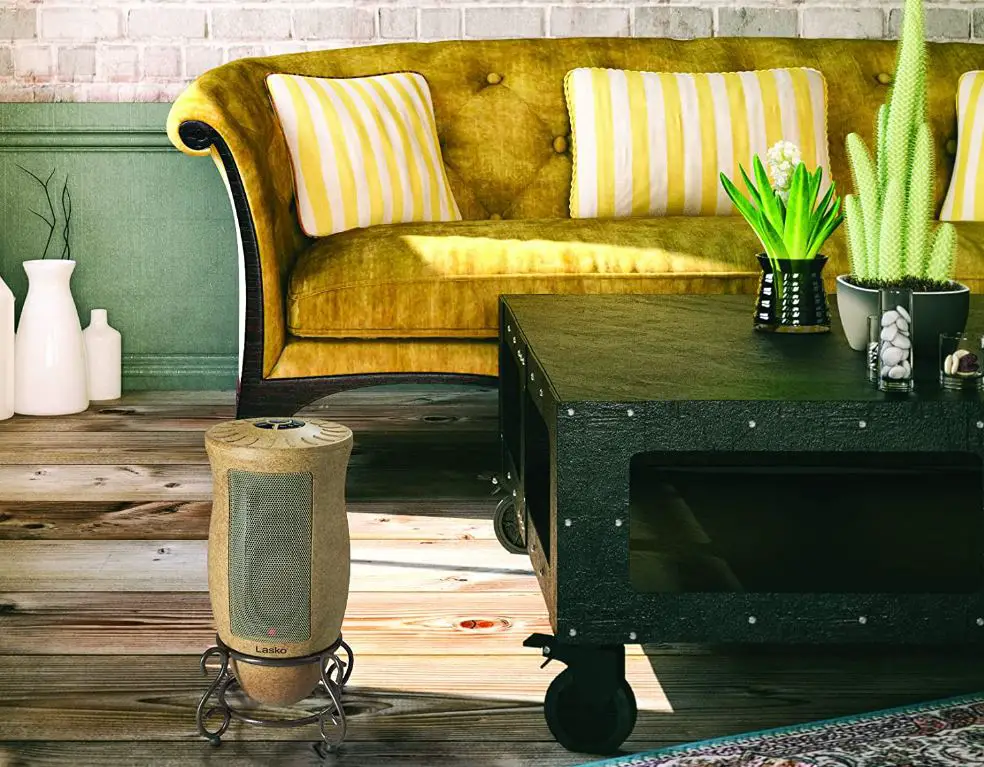
Surprisingly, ceramic heaters are some of the most efficient types of electrical space heaters. So long as you only need to heat up a small amount of space, these types of heaters can actually work very well.
What’s more important is that they are safe. Modern ceramic heaters turn themselves off when they are tipped over, don’t heat up on the outside and don’t produce any emissions.
However, their biggest flaw is that they only heat up a small space. So if you have large rooms or are looking for a whole-house heating solution, buying a bunch of ceramic heaters is not going to be worth it.
On the other hand, dorm rooms, small apartments and RVs are perfect for ceramic heaters. And if you simply want to keep warm at your desk while you work (without having to run the heater), you may also benefit greatly from the utility of a ceramic heater.



